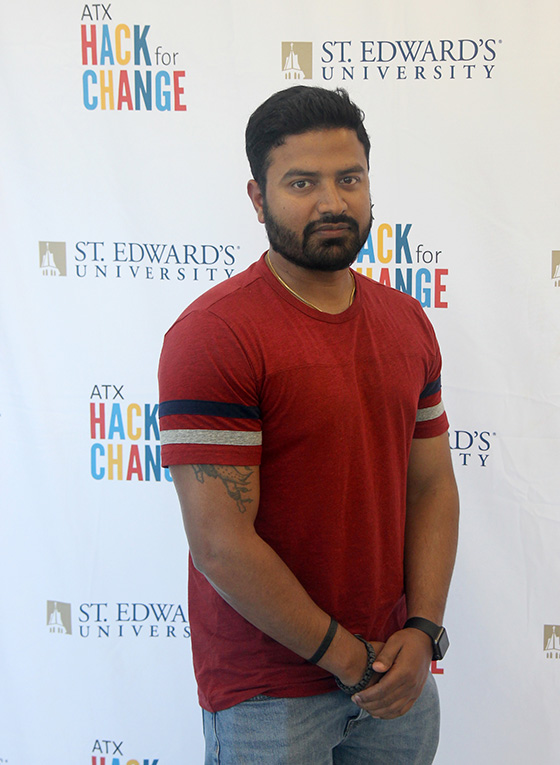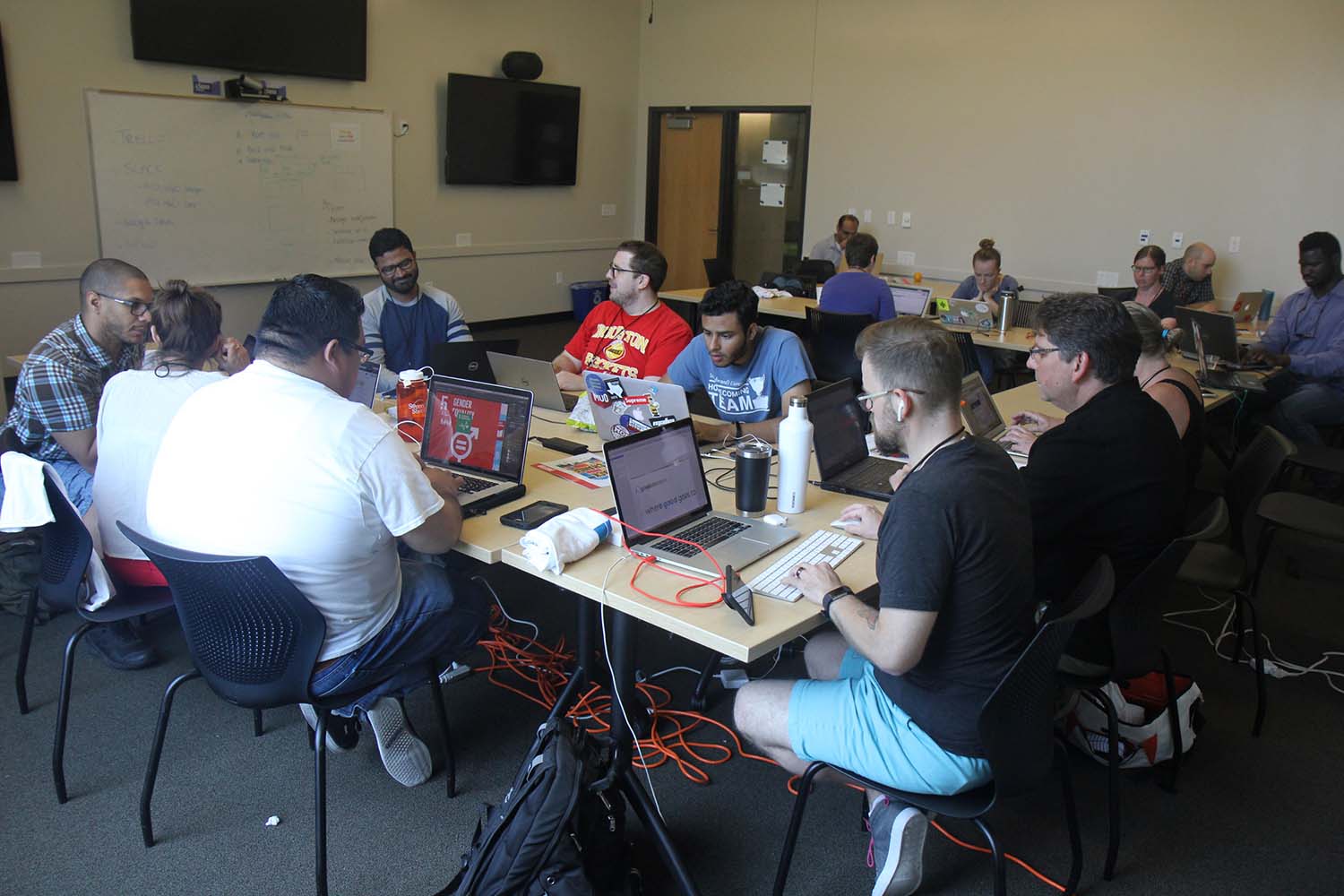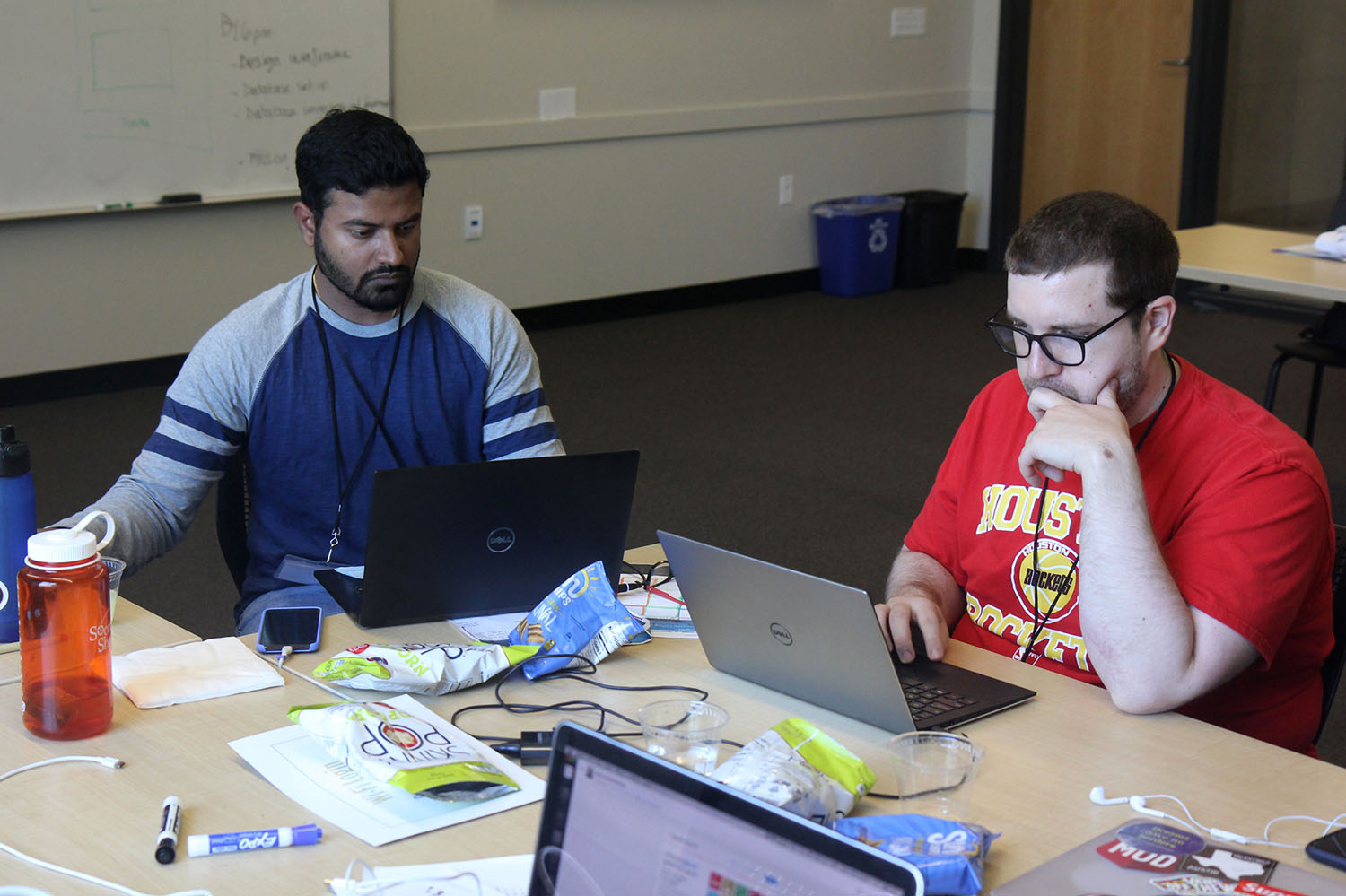Jun. 7, 2018
Describing the ATX Hack for Change experience can be challenging. How do you sum up a nonstop, mad-dash weekend that turns ideas into realities? We figured the best way was to have some else do it.
Arun Banotra is an Enterprise Application Administrator within the Office of Information Technology. (That's a fancy way of saying he's an architect for integrations between technologies and for your very identity within St. Edward's software.)
For ATX Hack for Change 2018 (June 1-3), Arun signed up as a hacker and then he sat down — after a suitable amount of rest and relaxation — to talk about his experience at the event, the project he worked on and whether he'd do it all again.
Why did you sign up to hack?
For a few reasons. I wanted to find something I wanted to improve, something that would make me want to go all-in to make a difference. I also enjoy connecting with like-minded people, and here we could work collectively toward a common goal — making our city a better, healthier and more inclusive place.
Hackathons are a great way to learn new stuff — places where you can get out of your comfort zone and experiment with new technologies, meet awesome people and bring your ideas to life. Why wouldn't I sign up?
So, you'd participated in hackathons before?
Yes and no. I'd done smaller hackathons geared toward a company or a project. This was certainly the first time I'd been to one for a nonprofit and on such a big scale.
How did you choose a project? Did you have more than one you wanted to work on?

Arun Banotra, Enterprise App Admin and ATX Hack for Change hacker.
Yes, after meeting individually with all the Project Champions and hearing about their project ideas, it was hard for me to make a final call on which one I would work on. All the project ideas were too good and helping society in one way or another, so selecting just one was a hard deal.
After my first meeting with all the Project Champions on Friday night, I shortlisted two projects and then I met with all the team members Saturday morning in order to understand what my role and responsibility in those projects would be. Finally, I decided on one project that was most inclined toward my areas of interest and my skill set.
What was most important in my decision-making process was making sure we developed something we'll want to use once this event was over, and the project I picked was all about that.
So, which project did you choose?
I finally chose the Good Emporium project, the main purpose of which was to serve as the complete repository for positive impact and social good in this city. Austin strives to be the social innovation capital of the world, but there is one major obstacle to that reality: thinking silos and a subsequent lack of collaboration.
In Austin, there are more than 6,000 nonprofits, many of which are working on the same or related issues — and they don't know about one another or, at least, aren't actively seeking to collaborate. The Good Emporium team wanted to enable this collaboration and empower community members and organizations to make decisions knowing the bigger picture.
The best way to understand it is to see it, and we put together a demo site at ATX Hack for Change.
What did you specifically hack over the weekend? What parts of the project did you work on?

The Good Emporium project team hard at work Saturday. Teams had from 8 a.m. Saturday to 3 p.m. Sunday to hack.
I worked on several parts of the project, including:
- front-end development
- integration between the front- and back-end
- data management
- data population and entry
Did you run into challenges?
Yes, determining what framework to build our site on to scale up, and then meeting the deadlines for the front-end. The only way we were able to overcome them was through team collaboration. We also pretty effectively managed expectations from the beginning.
The theme for ATX Hack for Change is, "We can't change the world in a weekend — but we can start." That's very true and a good thing to remember as you work through your project.
How did your team work together?
As I mentioned earlier, it was a great collaboration. Together, we decided to really go all-in and do our best to build something awesome by using the combination of our team members' different skills. Some things that worked well for us were:
- Organizing and assigning each to task to a member of the team. (We used Trello to do this.)
- Deciding in advance what technologies we would use.
- Setting up small and achievable goals.
- Maintaining a positive energy in the team throughout the event.
Everyone took their role seriously and responsibility, and we worked in one-hour sprints to find out quickly if someone needed help or was stuck somewhere. We were actually able to finish the project way earlier than the defined deadline on Sunday.
What was the best part of the weekend? What was the most difficult part?
The best part were the snacks at regular intervals! The most difficult part was waking up at 6 a.m. both Saturday and Sunday mornings ...
In the end, how did Good Emporium do?
Our team did a great job, and we clicked together well. We shared the same (tasteless) humor, a passion for hard tech and a hunger to find out what else we could achieve.

Arun and another Good Emporium hacker solving problems and making change. Their work led to the "Most Austin" distinction from the ATX Hack for Change judges.
And we earned an honorable mention: the "Most Austin" project of ATX Hack for Change 2018.
Do you think you'll work any more on the project, now that ATX Hack for Change is over?
Yes, we already submitted our project for OpenIDEO's global BridgeBuilder Challenge. At ATX Hack for Change, we produced a minimum viable product, and our next steps include attending community meetups, adding features and raising seed funding. We hope to launch Good Emporium in full in September.
Finally, would you do it all over again?
Yes, for sure. It was such a momentous experience. I think this is the most important takeaway from hackathons: Set your expectations high and be ready to exceed them. It doesn't matter if you're a first-timer with a new technology or if you're an experienced developer looking for new challenges. You'll find a hackathon that suits your needs.
Hackathons — including ATX Hack for Change — are a beautiful mixture of people with different backgrounds and a common passion. They're not just an event. They're a new mindset of solving a problem by focusing on what matters, working together toward a common goal and proving a point by getting stuff done.

The Good Emporium team presents their final project report. Twenty-six projects were accepted to ATX Hack for Change and more than 20 presented their work Sunday.
Where Good Goes to Work
You can find out more about Good Emporium — including how it works and what comes next — by checking out their final project submission for ATX Hack for Change 2018.